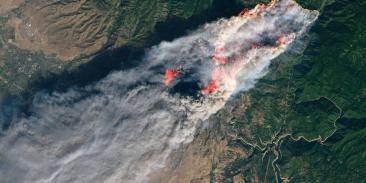New Report Analyzes Smart Growth In The Denver Region
Environmental Defense Rocky Mountain released a report today that measures growth and some of the factors that indicate whether Denver’s communities have “smart growth” or sprawling growth. The report, Sprawl in the Denver Region, documents population and development trends in the Denver Region.
“Most Coloradans agree that sprawl has a negative impact on our day to day lives, but sprawl can mean very different things to each of us. Sprawl can mean increasing traffic and long commutes to work, the loss of farmland and open space to development, and threats to the environment. We published this report to better understand how these issues relate to each other in communities and the region as a whole,” said report author Jennifer Pitt.
The report takes a community by community look at facts that help define sprawl. It also demonstrates which cities have tools in place to help plan for growth. The report’s data are compiled for each city in four chapters:
- LAND USE - Average Miles of Road Per Person, Average Residentially Developed Acres Per Person, Tools for Smart Growth,
- TRANSPORTATION - Motor Vehicles Per Household, People Who Spend More Than 20 Minutes Traveling to Work, Municipal Tools for Transportation Alternatives,
- JOBS AND HOUSING - Jobs Per Resident, People Working in Municipality of Residence, Growth of Jobs and Population, Mean Housing Price, Municipal Tools for Affordable Housing,
- ENVIRONMENTAL PROTECTION - Parks and Open Space, Parks and Open Space as a percentage of Land within Municipal Boundaries, Municipal Tools for Environmental Protection.
Cities that are included in Sprawl in the Denver Region: Arvada, Aurora, Boulder, Brighton, Broomfield, Castle Rock, Cherry Hills Village, Columbine Valley, Commerce City, Denver, Edgewater, Englewood, Erie, Federal Heights, Glendale, Golden, Greenwood Village, Lafayette, Lakewood, Littleton, Lone Tree, Longmont, Louisville, Northglenn, Parker, Sheridan, Superior, Thornton, Westminster, Wheat Ridge.
“This report provides reliable information that will help cities, law makers, planners, citizens, and developers build communities to improve the quality of life in Colorado,” said Pitt.
The report was co-authored by Carl Castillo, a graduate student in Urban and Regional Planning at the University of Colorado.
With more than 3 million members, Environmental Defense Fund creates transformational solutions to the most serious environmental problems. To do so, EDF links science, economics, law, and innovative private-sector partnerships to turn solutions into action. edf.org
Latest press releases
-
COMING SOON: An effort to weaken our popular chemical safety law
December 8, 2025 -
Groups File Lawsuit Challenging Trump EPA Final Rule That Delays Methane Pollution Protections from Oil and Gas Industry
December 4, 2025 -
New Statewide Survey: As Electricity Demand and Costs Skyrocket, Arizonans Support Building More Wind and Solar Energy
December 4, 2025 -
Trump Administration Announces Plan to Weaken Fuel Economy Standards for Cars and Trucks
December 3, 2025 -
Trump EPA Proposal Lowballs Risk of Cancer-causing Formaldehyde
December 3, 2025 -
New York Finalizes Greenhouse Gas Reporting Requirements for Major Polluters
December 2, 2025










